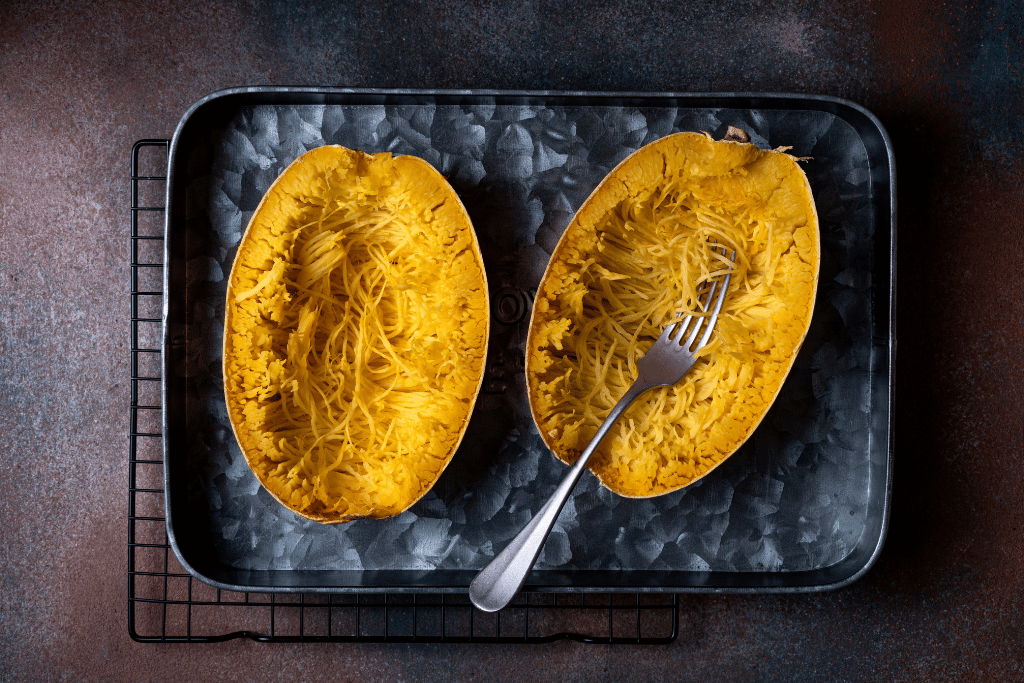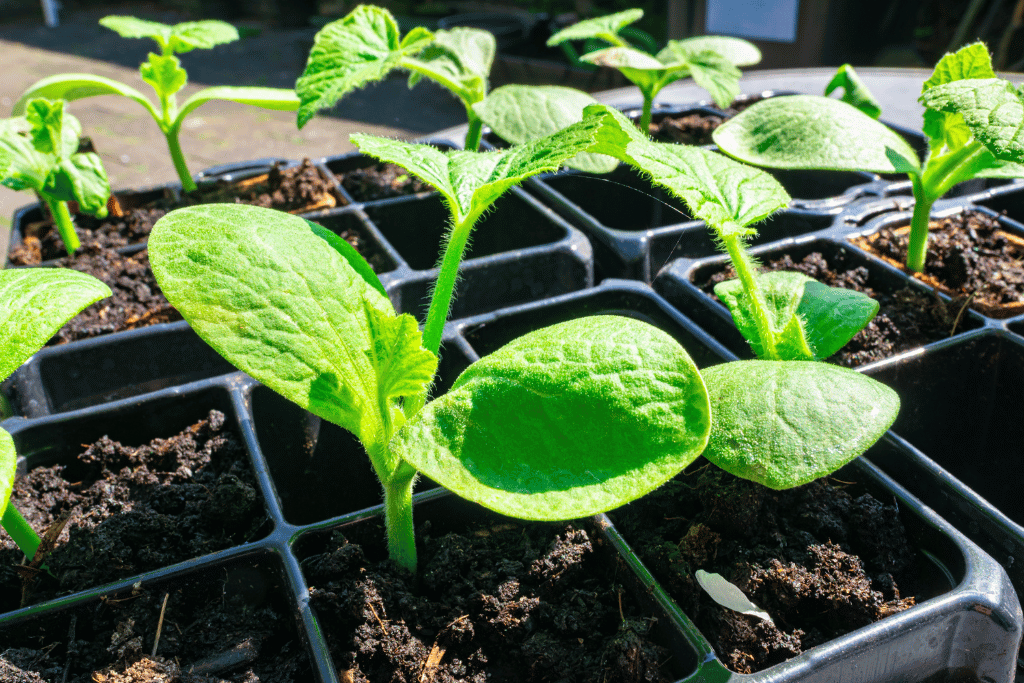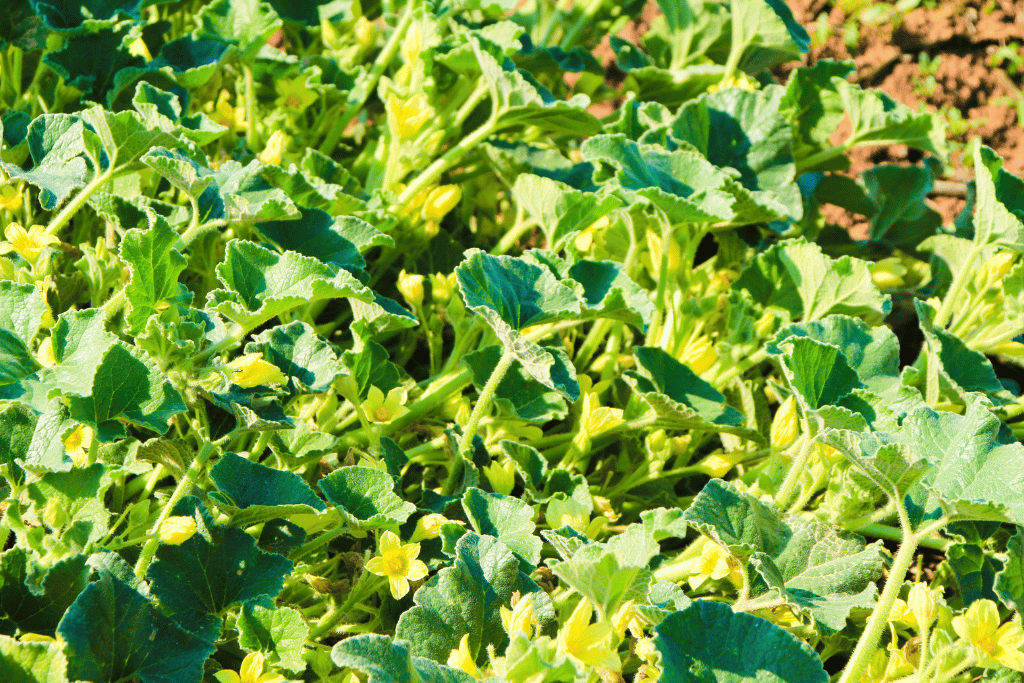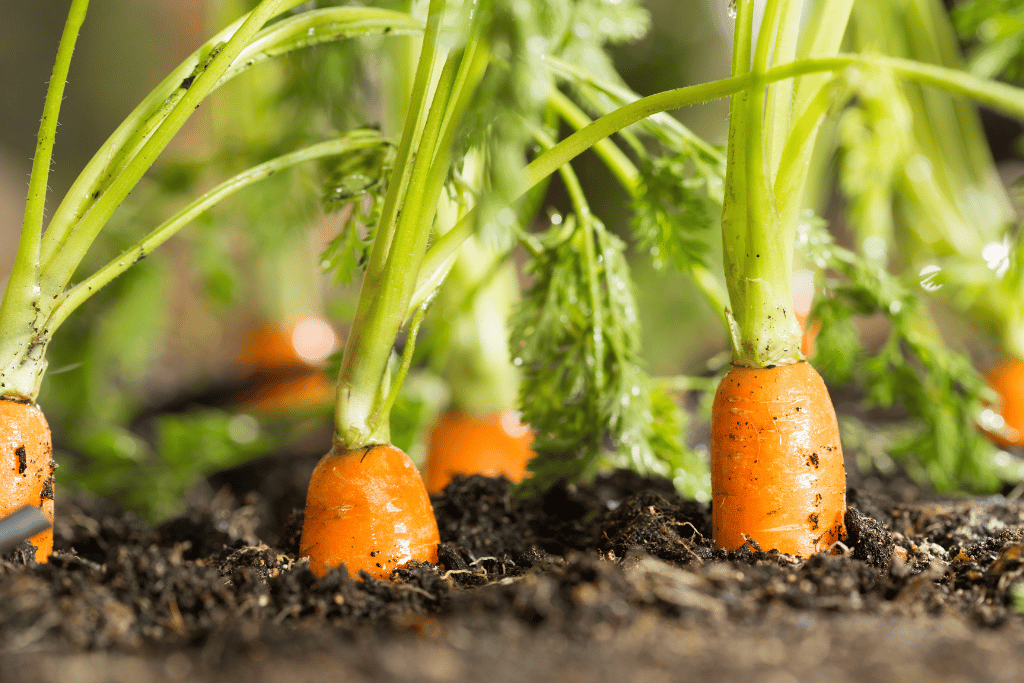
If you’re a fan of unique vegetables with versatile culinary potential, the spaghetti squash is going to be the star of your garden. With its distinct appearance and ability to mimic traditional pasta, this eye-catching plant is a must-try for any food lover. But to truly appreciate its potential, it’s important to understand the various growing stages of spaghetti squash. So, join me to explore how to cultivate this exquisite greenery to best enjoy the taste and aesthetics of its produce!
Spaghetti Squash Fast Facts
The Spaghetti squash, also known as Cucurbita pepo, is a member of the Cucurbitaceae family, which includes pumpkins, zucchinis, and other gourds. Other common names for this green include noodle squash, mandarin squash, and vegetable marrow. Its origins can be traced back to Central America, but today it is widely grown and enjoyed all over the world.
One of the most unique features of this attention-grasping gourd is its physical appearance. It’s definitely not one of the green pumpkin varieties, as it has a thick, hard rind that ranges in color from pale yellow to deep orange. When cut open, the flesh boasts a bright yellow shade and has a unique texture that resembles spaghetti noodles. Usually, a single plant can produce multiple fruits, anywhere from two to five.

But the real magic of the spaghetti squash lies in its versatility in the kitchen. It can be roasted, boiled, steamed, or microwaved, and used in a variety of dishes such as salads, soups, and casseroles. It’s also a great substitute for traditional pasta, making it an excellent low-carb option for those watching their waistline.
Spaghetti Squash Care Needs
Before we jump right into the spaghetti squash growing stages, let’s take a minute to get familiar with its unique needs. One of the most critical factors for cultivating vegetable marrow is the soil, which must be loose, fertile, and well-draining to allow for optimal growth and nutrient absorption. Opt for a pH level of 6.0-6.8 to make your leafy green feel comfortable in its bed.
Watering is another important aspect to watch out for. The plant requires consistent moisture, which means regular watering, especially during hot and dry weather. However, just like in the case of any other plant, avoid over-watering in order not to damage the root system.
In terms of temperature and humidity, spaghetti squash thrives in warm and sunny conditions with temperatures ranging from 70-85°F (21-29°C). It also prefers moderate humidity levels of around 50% or less.

This greenery needs plenty of sunlight to grow and produce fruit, so it’s crucial to provide it with a location of at least 6 hours of direct light.
Lastly, fertilization is necessary to support healthy growth and a good yield. For best results, apply a balanced fertilizer once or twice during the growing season, following the manufacturer’s instructions.
Spaghetti Squash Growing Stages
Stage 1: Germination
The adventure of cultivating this brilliant gourd begins with procuring fresh seeds. These are nestled within the fruit, in close proximity to the stem. To initiate the spaghetti squash growing stages, you can use seed starting trays, which are specifically designed to foster development from seeds. These items feature compact soil pockets that provide an ideal environment for the seeds to be sown and ultimately transform into thriving seedlings. Alternatively, pre-germinated options are also available to buy at local nurseries or online, depending on your location.
To enhance the germination process, it is crucial to soak the seeds in water for a period of 24 hours. Germination is the process by which a seed begins to grow roots and sprout. This typically lasts anywhere from 2 to 10 days and depends on factors such as temperature and humidity. When it comes to vegetable marrow, germination usually occurs within 7 to 14 days.

To ensure optimal growth, a balance of water and oxygen is required. Plant the seeds in moist soil, under the sun’s nourishing rays, burying them at least one inch deep and maintaining a minimum of 12 inches between each seed.
For those who prefer container gardening, select pots or baskets with a width of three inches and plant three to four seeds per container, each an inch deep. Pick a warm and sunlit spot for them to encourage germination, leading to the next spaghetti squash growing stage.
Stage 2: Seedling
When spaghetti squash takes its first steps towards maturity, it starts with the seedling stage – a time when the first true leaves appear on the small plant, which is distinct from the embryonic leaves that emerged during germination. The spaghetti squash plant growing stages entail the greenery getting taller and stronger, which happens visibly during the seedling period.

For about a month, the seedlings mature into sturdier versions of themselves, with leaves that boast a robust, healthy green hue. Moist soil is essential at this phase, but don’t go overboard with the watering, as the seedlings must have proper drainage. Make sure you don’t forget fertilization every two to three weeks at this point.
Stage 3: Vegetative Phase
The growing stages of spaghetti squash wouldn’t be complete without the vegetative phase, where the vines grow rapidly, sprouting new leaves, stems, and roots. This phenomenon can last for a couple of months, and your leafy friend will keep expanding until it reaches its desired height.
Throughout this period, the plant will grow male flowers, which look bushy, or female flowers, which are longer and thinner. These flowers produce eggs or pollen during their bloom, and they are usually pollinated by bees, although you can also attract pollinators by planting companion plants nearby, such as dill and chamomile.

If bees are not around, don’t worry! You can still help with the pollination process by using a Q-tip to transfer pollen from a male flower to a female one. After fertilization takes place, the flower fades, and the fruits start to develop seeds. It takes about 100 days for the greenery to reach its full size, so be patient and enjoy the beauty of all the growing stages of spaghetti squash!
Stage 4: Reproduction
Among the various spaghetti squash growing stages, the fourth one is called the reproductive phase. This time marks the production of either male or female fruits, depending on whether fertilization occurred in the earlier vegetative stage. The male fruit is distinguishable by its oval shape and sturdy stem at the end, while the female fruit appears similar but has a tiny squash growing from the point where the stem meets the fruit. As they reach maturity, the produce develops a yellow hue with orange and red stripes, resembling the pumpkins and gourds that are commonly used for autumnal decorations.

Stage 5: Harvesting
The plant will be ready for harvest in around 150-250 days counted from the time of planting. When picking spaghetti squash, timing is everything. To ensure you harvest at the perfect time, look for a deep, rich yellow rind that is firm and free from any soft spots or blemishes.
A dry and brown stem is a clear sign that the fruit has matured and is ready to be picked. To check the skin, try puncturing it with your fingernail. If it resists, it’s time to harvest. However, if the exterior is easily punctured, the squash still needs time to ripen. Collect all squash before the first frost to prevent any damage to the produce. When picking spaghetti squash, delicately remove it from the vine, leaving a couple of inches of stem attached to extend its shelf life.

How To Store Spaghetti Squash
If you’re looking to put away spaghetti squash for later use, there are a few options available to you depending on your capacity and preferred method. If you live in a dry climate, keeping the picked fruits at room temperature for décor is perfectly fine. However, in case you want to ensure really long-term shelf life, you’ll need to keep them in an arid and moisture-free area, which extends their lifespan for several months.
When it comes to storing cut spaghetti squash, you can keep it in the refrigerator for one to two weeks. However, there are other solutions to choose from. For instance, pressure canning is a technique that involves placing the squash in jars and processing them at high pressure to kill bacteria.
Alternatively, dehydration is another viable option. Drying out the fruits and keeping them in a cool, dry place keeps them edible for a few months. Ultimately, freeze-drying the squash is also an effective method. It’s about putting the produce in a vacuum-sealed container to be stored even up to multiple years.
Conclusion
Becoming familiar with the developmental phases of spaghetti squash is crucial for green thumbs to guarantee the vitality and productivity of their greenery. By providing attentive and appropriate upkeep during each of the spaghetti squash growing stages, gardeners can relish a plentiful yield of scrumptious and savory gourds.




